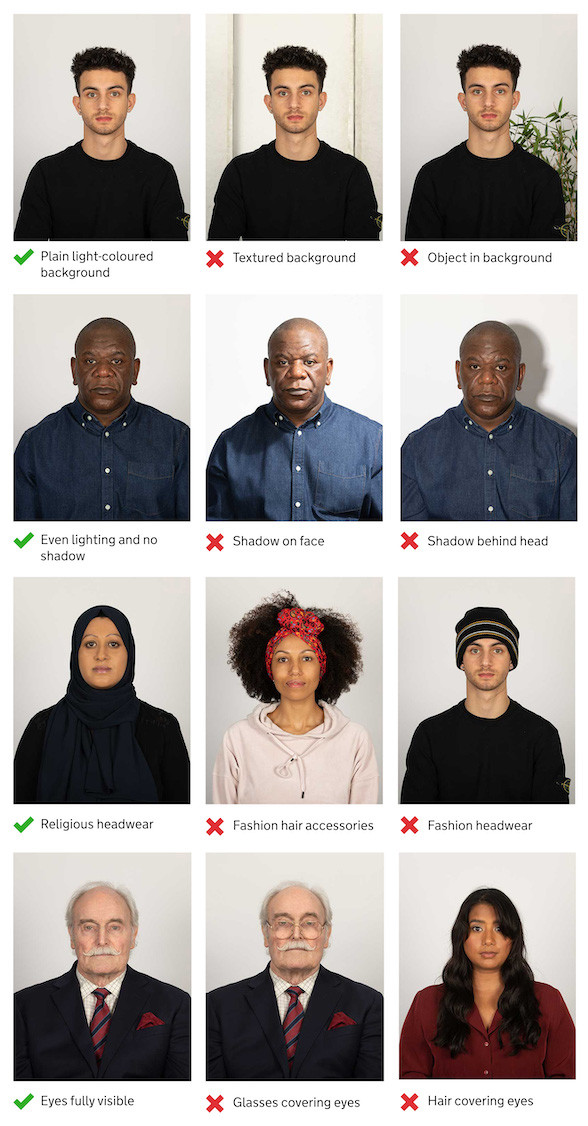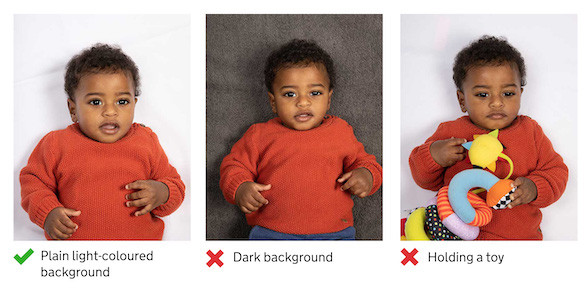Applying for a passport requires meticulous attention to detail, and one of the most crucial aspects is your passport photo. A seemingly minor detail like wearing glasses can actually cause complications if not handled correctly. Many applicants find themselves wondering, “Can You Wear Glasses In A Passport Photo?”. Understanding the guidelines surrounding eyewear in your passport photo is essential to ensure your application proceeds smoothly and without unnecessary delays. This article provides a comprehensive guide to the rules about wearing glasses in passport photos, ensuring you get it right the first time.
Understanding the Official Guidelines on Glasses in Passport Photos
Official passport photo guidelines are designed to ensure clear facial recognition, and eyewear can sometimes interfere with this process. The general rule is that glasses should be avoided if possible in your passport photo. However, recognizing that for some individuals, wearing glasses is a necessity, there are specific exceptions and conditions under which glasses are permitted.
The core principle is that your eyes must be clearly visible and free from obstruction. This means even if you typically wear glasses, you should ideally remove them for your passport photo unless you meet specific criteria.
When Are Glasses Permitted in a Passport Photo?
While generally discouraged, wearing glasses is allowed in a passport photo under certain limited circumstances. These are typically when glasses are medically necessary. If you must wear glasses for medical reasons, ensure you adhere to the following strict rules to avoid photo rejection:
- Non-Tinted Lenses: Glasses must have clear, non-tinted lenses. Sunglasses or tinted glasses are strictly prohibited.
- No Glare or Reflection: There should be no glare or reflections on the lenses that obscure your eyes. Adjusting the lighting and angle of the photo is crucial to eliminate reflections.
- Frames Must Not Obscure Eyes: Frames should not cover any part of your eyes. Choose glasses with thin frames if possible, and ensure they are positioned correctly on your face.
- Eyes Clearly Visible: Your eyes must be clearly visible through the lenses. Ensure your eyes are open and not squinting, and that the frames or lenses do not cast shadows over your eyes.
If you can meet all these conditions, and you genuinely need to wear glasses for medical reasons, your photo might be acceptable. However, it’s always safer to take the photo without glasses if you can manage, to minimize any risk of rejection.
Why Glasses Can Cause Passport Photo Rejection
Even when individuals believe they have followed the guidelines, photos with glasses are more prone to rejection. This is primarily because glasses introduce several potential issues:
- Reflection and Glare: Studio lighting or flash photography can easily cause reflections on glasses lenses, obscuring the eyes.
- Obscured Eyes: Thick frames can cover parts of the eyes, even if unintentionally. Similarly, the angle of the photo or the positioning of the glasses can lead to the frames casting shadows or blocking the clear view of the eyes.
- Tinted Lenses (Unintentional): Some lenses might appear slightly tinted in certain lighting conditions, even if they seem clear in person, which can lead to rejection.
To avoid these problems, the simplest solution is often to remove glasses for the photo. If you are concerned about not being recognizable without your glasses, remember that passport officials are trained to recognize people with and without glasses.
Tips for Taking a Passport Photo with Glasses (If Necessary)
If you must wear glasses for medical reasons in your passport photo, follow these tips to maximize your chances of acceptance:
- Choose the Right Glasses: Opt for glasses with thin frames and non-reflective lenses if possible.
- Professional Photo Service: Consider using a professional passport photo service. They are experienced in taking photos that meet official guidelines and can adjust lighting and angles to minimize glare and reflection on glasses.
- Check for Glare: Before finalizing the photo, carefully check for any glare or reflections on the lenses. Take multiple photos with slight adjustments to head position and lighting to find the best option.
- Ensure Eyes are Fully Visible: Double-check that your eyes are wide open, clearly visible, and not obscured by frames or shadows.
- Practice and Review: Take several practice photos and review them critically against the guidelines before submitting your application.
 Alt text: Example of an acceptable adult passport photo demonstrating correct posture, plain background, and no glasses.
Alt text: Example of an acceptable adult passport photo demonstrating correct posture, plain background, and no glasses.
Passport Photos for Babies and Children: Glasses Considerations
The rules for passport photos of babies and children are slightly different, especially for very young children. While the guidelines don’t specifically relax rules regarding glasses for children, the focus is more on capturing a recognizable image.
Generally, it’s still preferable for children not to wear glasses in passport photos if possible. However, if a child wears glasses regularly, and removing them causes significant distress, a degree of leniency might be applied, provided the glasses meet the same conditions as for adults: non-tinted lenses, no glare, and eyes clearly visible.
For babies, the rules are even more relaxed concerning expression and gaze, but the principles regarding glasses remain the same when applicable. If a baby or young child is photographed with glasses, ensure no glare obscures their eyes.
 Alt text: Example of an acceptable child passport photo where the child is facing forward with a plain background, illustrating guidelines applicable to children’s passport photos.
Alt text: Example of an acceptable child passport photo where the child is facing forward with a plain background, illustrating guidelines applicable to children’s passport photos.
Conclusion: Clarity is Key When it Comes to Glasses and Passport Photos
In summary, while it’s possible to wear glasses in a passport photo under specific circumstances, it is generally advised against unless medically necessary. The stringent requirements regarding lens clarity, absence of glare, and unobstructed visibility of the eyes mean that photos with glasses have a higher risk of rejection.
To ensure a smooth passport application process, the safest approach is to remove your glasses for your passport photo if you can. If you must wear them, meticulously follow the guidelines, consider professional photo services, and double-check your photo against all requirements before submission. Clarity and visibility are paramount for passport photos, and understanding the rules about glasses is a crucial step in getting your application right.
